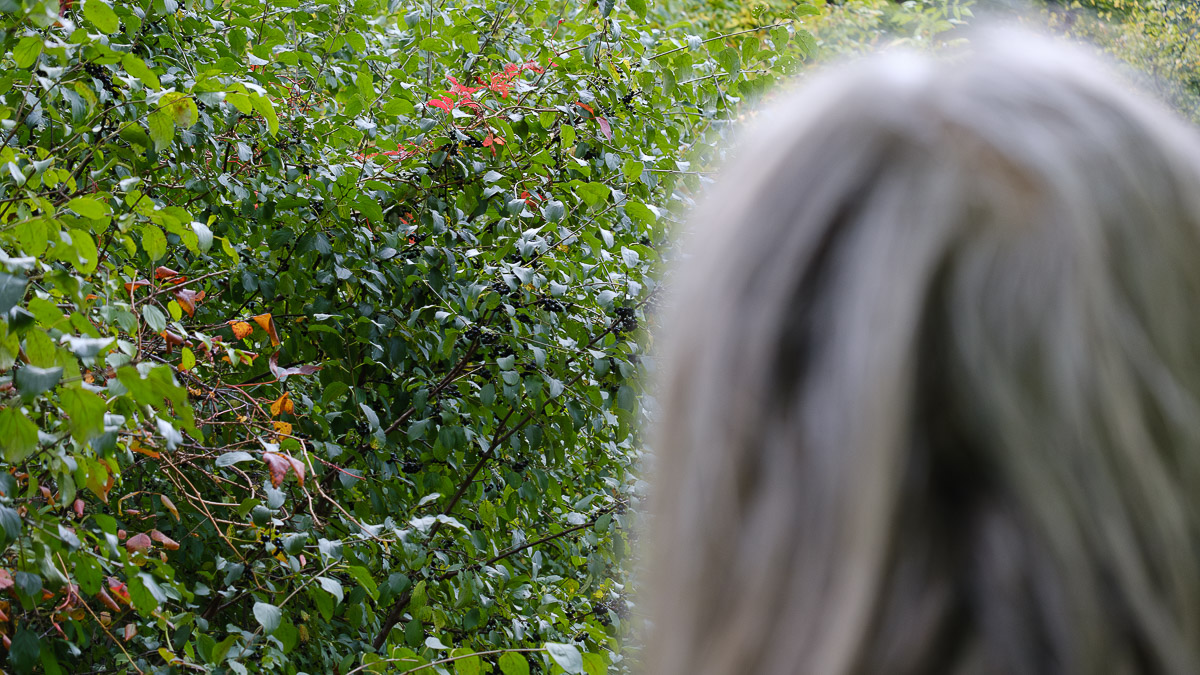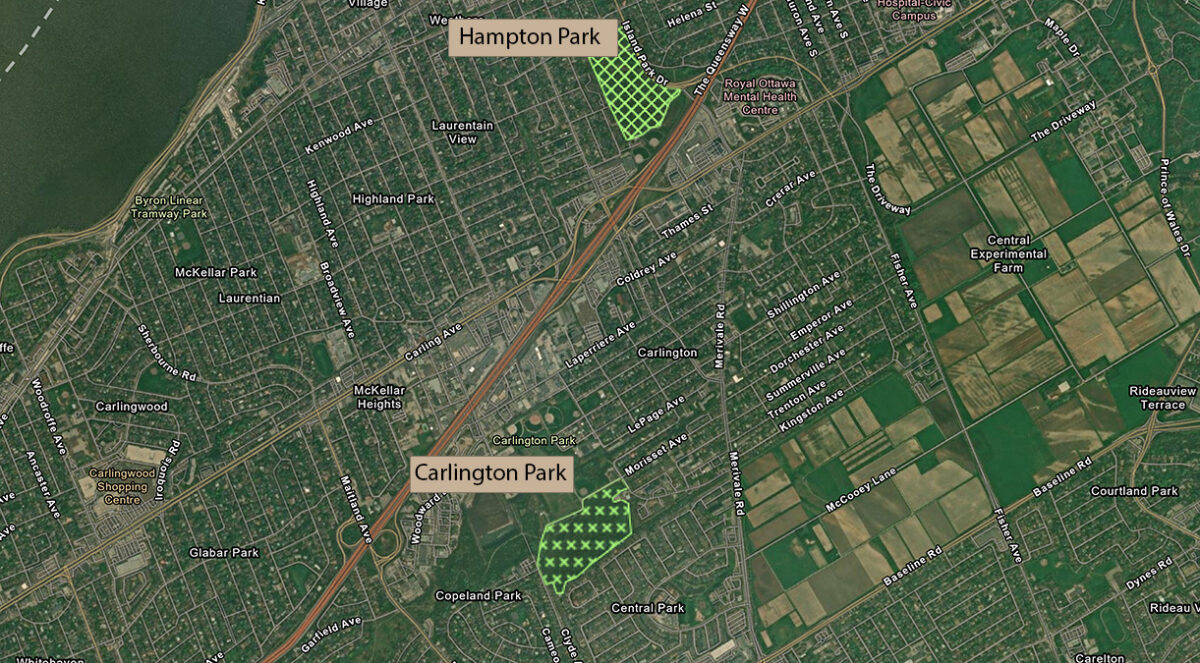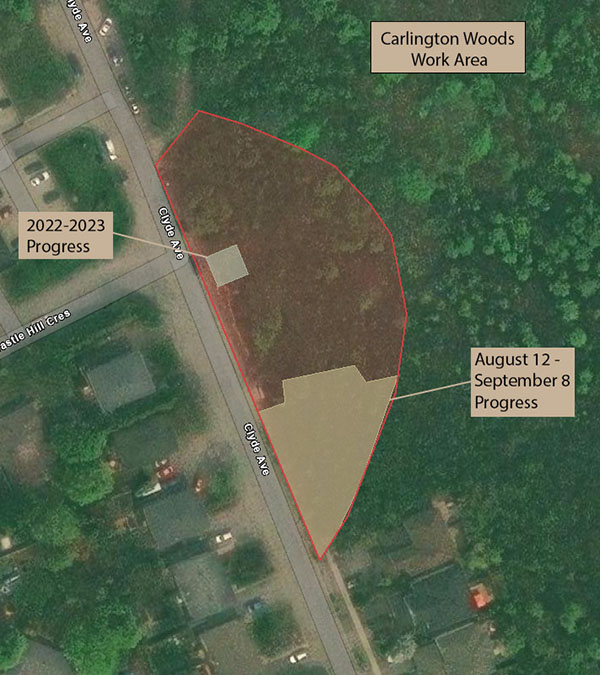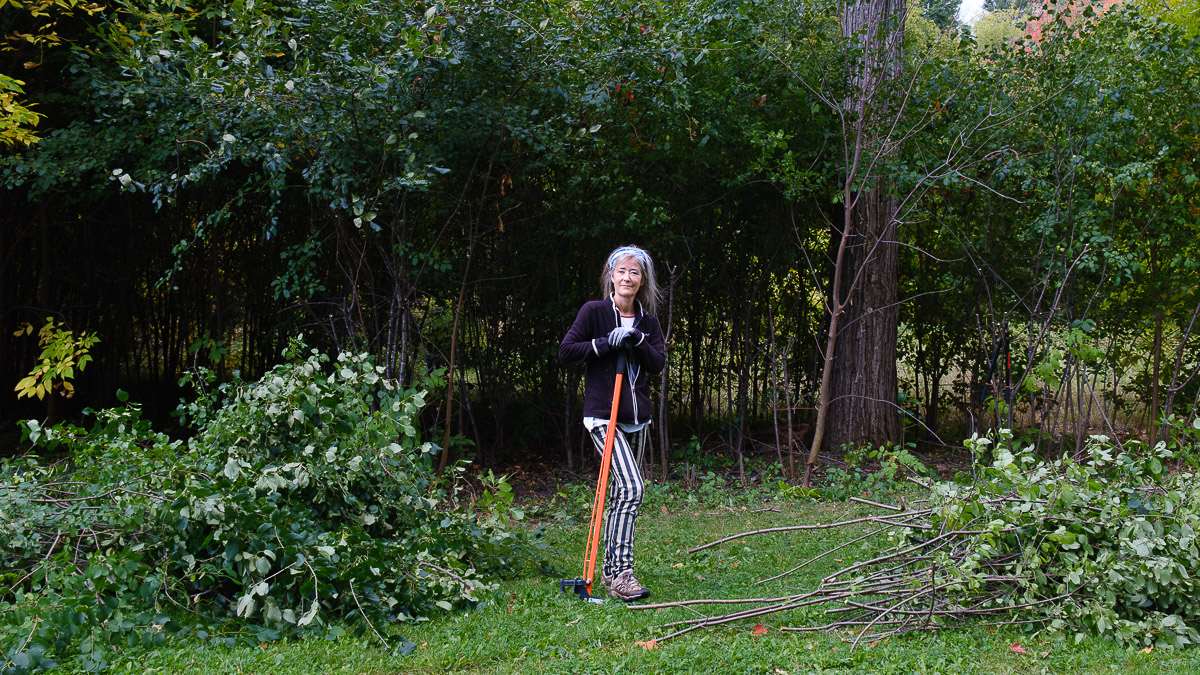Sharon Boddy hops on her bike, which tows a modified trailer full of gardening tools, and heads to her local park where she begins ripping shrubs out of the ground.
She piles up the debris and cuts off the ends of branches filled with dense clusters of berries. A retired writer and journalist, Boddy uses her trusty shears with the efficiency of a seasoned landscaper.
Along with an informal team of volunteers, Boddy is helping stop common buckthorn, an invasive species, from taking over Hampton Park and choking out native plants.
And it’s not just in Hampton Park. The National Capital Commission says common buckthorn is widespread across Ottawa forests.
“It was brought in as an ornamental shrub,” said Boddy. “It’s been here for probably 100 years, 150 years, and it’s slowly taken over. People didn’t really know that it was a problem.”
Boddy, who helped form the “Friends of Hampton Park” in 2019, is sometimes aided by locals or brings in school groups to help remove buckthorn.
But this morning, like many others, Boddy is alone.
“I’m not paid for any of this, and it’s getting to the point where … I’m going to be bugging the NCC,” said Boddy. “I want a contract.”

Mike Schuster says buckthorn is a big problem across North America and requires consistent attention.
The invasive plant researcher at the University of Minnesota says buckthorn produces a lot of fruit, making it easy for birds to spread seeds. Once the plant is established, it grows a thick canopy of densely packed leaves, which leaves other native species in the dark.
“We’ve seen how bad it can get,” said Schuster.
He said forests with buckthorn experience higher erosion and lower water quality for wildlife. Native plants, which are food for local species, are replaced with buckthorn. Fallen buckthorn leaves also decompose, attracting earthworms and creating an ideal environment for even more buckthorn to thrive.
Schuster said the process is “pulling the rug out from underneath ecosystems and replacing it with just one species.”

About a 25-minute walk south of Hampton Park, Nora Lee spearheads the invasive buckthorn removal project at Carlington Park. She’s with “Friends of Carlington Woods.“
“I’ve been thinking about it for years,” said Lee. “Knowing just how full these woods are with buckthorn and how unfortunate that is and seeing it as a huge problem. At first, you don’t think you could possibly tackle it, but then I couldn’t stop thinking about it.”
Lee, who lives a block from the forest, started removing buckthorn to protect her pollinator garden, which she created in 2021.
Like Boddy, Lee has been working with a handful of volunteers since August to rescue a small section of the Carlington forest.

Seeding with native species is “critical for the long-term success of any project,” said Schuster. He said in many cases, buckthorn will grow back worse if it’s not replaced.
Boddy and Lee have plans to replace the removed buckthorn with a variety of native plants such as black cherry, red pine and bur oak.
Some of these plants are donated by local residents. The NCC — which manages both parks — is also giving Boddy and Lee a load of native species to fill in where they have removed buckthorn.
“The NCC fully supports the efforts by the Friends of Carlington and Hampton Park, both with services and staff resources,” a spokesperson said in an email to Capital Current. “This week, the NCC purchased and delivered dozens of trees for the replanting project led by the Friends. Every month in the summer, NCC staff do at least one day of invasive species removal for the Friends. The NCC was invited to participate in two events with the Friends of Hampton Park and co-led a community event with a school group.”
While the NCC provides support, Boddy said the organizations are still stretched thin. Boddy and Lee each have a land access permit from the NCC to work in either park, but they aren’t paid.
“People shouldn’t have to work for free all the time,” said Boddy, who has cleared more than 4,000 square feet of buckthorn in the Hampton forest. “It’s just too much and it’s not right for the landowners to be relying on us that much either.”
“I cannot rely on the kindness of volunteers. Like, if we just stopped right now, I don’t even want to think about what would happen.”
“It would be impossible to remove it in any way nearing eradication,” said Schuster. “We’re not going to eradicate it, we’re not going to fully exclude it, but what we can do is look for opportunities to make a targeted impact.”
Even the small areas that Lee and Boddy are working on could be “multi-year ventures,” said Lee.
After the fall season wraps up, the two volunteers said they will resume working in the spring.
Lee said, “Ideally, there’d be enough interest and enough motivation of people who are keen to keep going, to keep on moving through the whole forest, all 22 hectares.”
If you are interested in volunteering with the Friends of Hampton or Carlington Park, you can email Sharon Boddy at CarlingtonHampton@gmail.com for more details. You can also reach the Carlington or Hampton Friends on Facebook.




